What Can You Use As A Dark Background For A Glofish Tank
So, you lot desire to paint a background on your aquarium?
Or maybe you want to paint something within your tank.
Well, the first affair you lot need to practice is buy some pigment.
But not just any one-time pigment…
You need aquarium-safe pigment!
Today, I'm going to teach why you can't utilise any paint, every bit well as share my favorite pigment brands – they are all safe for aquarium utilize.
at a glance: our pinnacle picks for aquarium-safe paints
The danger of using the wrong pigment on your aquarium
| | Krylon K02758007 Fusion All-In-One Spray Paint
| |
| | Performix 11203 Plasti Dip Blackness Multi-Purpose Prophylactic Coating Aerosol
| |
| | Drylok 27512 Latex H2o Proofer
|
Your aquarium might look calm and soothing, but it's actually an extremely harsh environment. Well, for paint, anyway.
Most paint does non do well when exposed to water. The bad news? Your tank is total of it.
Many paints blot water and soon brainstorm to chimera or peel, breaking off in tiny flakes. To your dumb fish, those flakes of pigment look near identical to fish flakes – nom, nom, nom!
I don't have to tell you that paint isn't something that should be included in your fish'southward diet.
Even paint that appears to agree upward just fine can be leaching deadly chemicals into your tank – chemicals that you cannot encounter!
Not fifty-fifty the best aquarium test kit can detect these harsh chemicals. You won't know in that location is a problem until it'due south besides late and all your fish are expressionless.
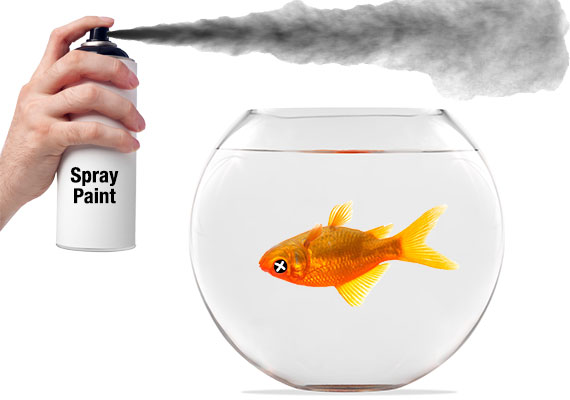
To put it simply:
You are trusting the lives of your fish with this paint. So, make sure yous choose the right one!
Which brings me to my next point…
At that place isn't actually such a thing equally aquarium-rubber paint. At to the lowest degree not officially.
At the time of writing this, almost none of the large paint manufacturers take tested how their product works in aquariums. And between you lot and me, I don't think they ever volition. Not enough demand exists for an aquarium-safe paint to justify this expensive research.
Every bit a outcome, no visitor is going to declare that their paint is prophylactic for aquariums.
But that doesn't mean the paint is unsafe…
Information technology just means that these companies don't desire to brand these claims and get out themselves open to lawsuits.
Don't get me wrong, industrial-purpose, not-toxic epoxy paints designed for aquaculture or beer brewing are out in that location. Just these cost hundreds of dollars and likely more than your entire aquarium setup.[i]
Fortunately, the demand to pigment something inside an aquarium is a fairly mutual trouble. For those of us who tin can't beget these premium-priced paints, at that place are upkeep options available.
And after years of testing through trial and error, hobbyists now have a proficient understanding of which paints are considered safe for your aquarium and which should exist avoided – and they are affordable.
Let's accept a closer look at the different paint you can utilize with your aquarium…
All-time aquarium-safe paint for inside your aquarium
This department covers paints that will be submerged in your tank, such every bit on decorations and pipes. These paints won't peel, bit or leach chemicals when placed under water, keeping your fish condom.
Unless otherwise stated, all paints need to exist applied outside of the aquarium and left to dry before being placed inside your aquarium.
The following recommendations are suitable for both freshwater and saltwater aquariums.
1. All-time aquarium-condom spray pigment
I love spray pigment. No brushes, nothing to clean upwardly, merely spray and you're done.
It's pretty much my go-to weapon when using those horrible white PVC pipes in my aquariums. A quick coat of black paint and they basically disappear into the background.
The fob to applying spray pigment is sparse, even coats then that it doesn't baste. You can always add more than layers once the previous one dries.

Krylon Fusion is the most normally recommended aquarium spray paint and is particularly popular for those with reef tanks.
It clings to plastic, PVC and resin and has a clean end. But the main reason for its popularity is the wide range of colors that it is bachelor in – no other pigment used by hobbyists comes in such a pick.
I adjure to its effectiveness. I used Krylon Fusion on a tank I owned waaaay back in 2006. I took the tank down four years later, and my PVC pipes showed no signs of flaking.
While Krylon Fusion may dry in as niggling as 15 minutes, it takes an unabridged week for it to properly cure and become bit-resistant. Once the week is finished, rinse it in dechlorinated water to remove whatever leftover residue and dust that accumulated on the surface.
Ignore the fact that Krylon Fusion claims to demand no prep-work. If you lot skip the prep, yous are much more likely to experience chipping or flaking. Sand and clean whatever surface before coating information technology with Krylon Fusion.
FishLab Tip: Krylon makes a variety of different spray paints. Only Krylon Fusion is considered aquarium-safe once cured.
Krylon Fusion is only to exist used for painting plastics. If you lot want a spray pigment that is suitable for other materials, including glass, then cheque out my next recommendation:
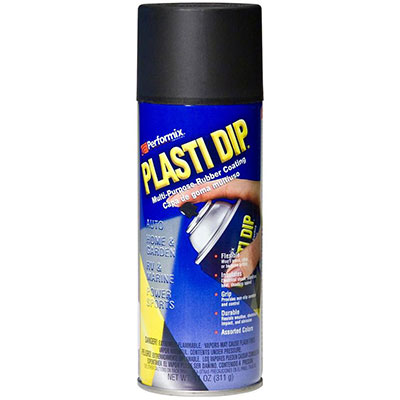
While information technology may await and apply like regular spray paint, this unique product dries into a business firm rubber.
It's this unique property that means Plasti Dip won't flake or fissure, even after years of being submerged in your aquarium. You can even use it to seal decorations that would otherwise be unsafe in your aquarium.
Information technology truly is fish-safe. Let's say y'all have a pleco that enjoys rasping algae off whatsoever surface in your aquarium. You can remain confident that he won't remove any prophylactic while gnawing on the algae blanket it – same goes for any other algae eaters like snails, shrimp and crabs.
In one case you finish the final coat, expect 24 hours to ensure that the coating has cured properly. If it's going in your aquarium, rinse it in a bucket with dechlorinated water get-go.
2. All-time aquarium-safe paint for everything else
Spray pigment is pretty much my go-to for anything I need to paint inside my aquarium. Merely what happens if you lot demand to paint something unusual, say Styrofoam, concrete, brick or even a terracotta pot?
Well, that's where my adjacent recommendation comes in.
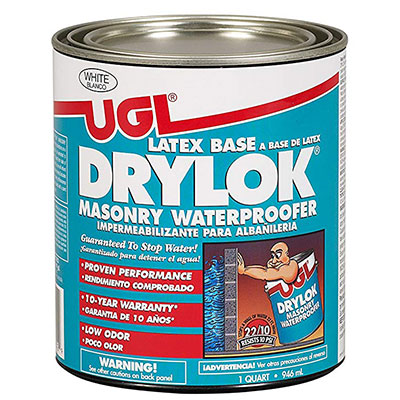
Drylok is typically used in larger applications, like ponds. But because it is fish-safe, y'all tin can too use Drylok inside your aquarium.
In fact, Drylok is commonly used in 3D aquarium backgrounds – you know, the ones that look like existent rockwork.[2]
Now, information technology's worth mentioning that Drylok isn't actually paint. Information technology's a water proofer. It seals whatever you coat information technology in, protecting it from water.
Considering of this, Drylok is plain white in color. While Drylok comes in various colors, they likely are not aquarium-safe.
However, you can create your own colored waterproof paint past mixing Drylok with Quikrete Liquid Concrete paint, which is also aquarium-safety.
Quickrete Liquid Concrete Paint is available in:
- Charcoal
- Brown
- Buff (Nighttime Orange/Brown)
- Terracotta
- Red
The more than Quikrete paint you add to Drylok, the more vibrant the color. By using more or less, you create different shades of color. With conscientious awarding, use these shades to create shadows and highlights.
Important: Buy the Latex-Base Drylok Masonry Waterproofer, which is linked to in this guide. Drylock makes other waterproofers, such as Drylok Pro and Drylok Extreme, that contain fungicides. These can kill not only the beneficial leaner in your aquarium but also your fish.
Now that I have covered paint that is suitable for inside your aquarium, permit's accept a closer look at what you can apply on the outside.
Aquarium-safe paint for outside your aquarium
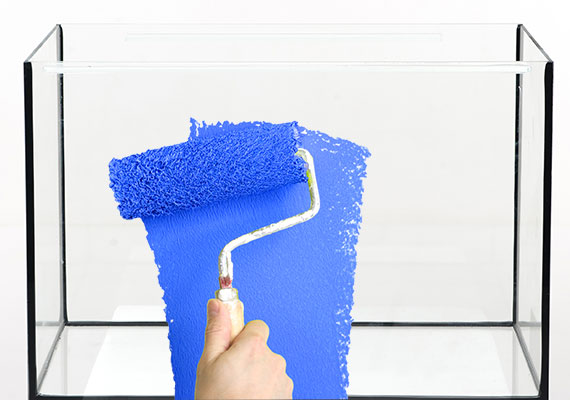
This section covers pigment that is not going to be submerged under h2o, such equally the drinking glass, trim or even the stand that your aquarium rests on.
Only past far the near commonly painted function of an aquarium is the rear glass panel.
FishLab Tip: Desire to paint a background on the rear of your aquarium? Brand sure you exercise it before yous set upward your aquarium and add your fish.
Is your aquarium is already set up? Use a vinyl groundwork like this one instead – it can be easily applied with fish inside your tank.
Painting the rear and sides of your aquarium makes your fish and plants much easier to see. It blocks any distractions that might be present on the other side of your tank.
Black and blue are the most unremarkably used colors for painting aquarium backgrounds.
I personally paint my aquarium background black – it'due south the same color as my heaters, filter plumbing and overflow, assuasive them to blend into the background. Blue, on the other hand, is much more ordinarily used in reef tanks.
But which pigment should you utilise?
Truth exist told, it doesn't really matter what paint you lot apply on the outside of your tank – this isn't going to come into contact with your fish.
I take seen hobbyists use spray paint, rolled-on acrylic paint, Plasti Dip…
While most hobbyists use flat (matte) paint for their background, it doesn't matter too much if you lot apply gloss or semi-gloss. The glass is going to add glare when y'all look at the background from the inside of your tank anyway.
If it's going on the back glass on the outside of your aquarium, it doesn't thing likewise much which aquarium paint you use. They all go out a smooth finish that makes the within of your aquarium popular.
However…
You need to consider your future plans for your aquarium.
Over time, the paint can scratch, and you might accidentally elevate your aquarium net or foil fish food packet along the rear and go out a nasty gash.
Even if yous are careful non to scratch information technology, the paint might merely not concur up well to the moisture environment that is your aquarium.
To get rid of scratches, you basically have to strip off the paint and start once more.
If your paint is designed to go on and stay on, then removing information technology tin can exist a chore – typically involving hours slowly peeling away the paint with the help of a razor bract.
That'due south why I use Plasti Dip. Information technology is easy to spray on the rear of your aquarium, dries smooth and looks great. My Plasti Dip groundwork has been going potent for ii years now and shows no sign of becoming brittle or bang-up.

Only that'due south non the all-time part. When the time comes to remove your background, merely peel it off. Yes, because Plasti Dip is rubber and not paint, it is really easy to remove.
It'due south easy to see why Plasti Dip is the become-to background paint of many fish keepers.
As for stands, cabinets and anything your aquarium rests on, use an oil-based pigment. Oil-based paints are water-repellent and concord up well to beingness splashed with water during a water change.
Conclusion
Every bit you lot see, while there are many different paints available, very few are actually suitable for your aquarium.
Fortunately, y'all don't demand to spend hundreds of dollars on an epoxy paint. You tin make practise with these everyday solutions. All-time of all, they can be found on the shelf of your local hardware store.
What paint did you employ on your aquarium? Let me know in the comments below!
What Can You Use As A Dark Background For A Glofish Tank,
Source: https://fishlab.com/aquarium-safe-paint/
Posted by: owenscrind1984.blogspot.com

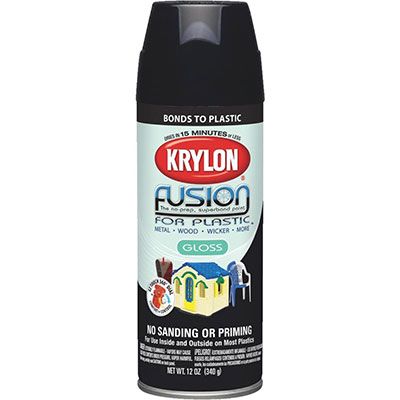



0 Response to "What Can You Use As A Dark Background For A Glofish Tank"
Post a Comment